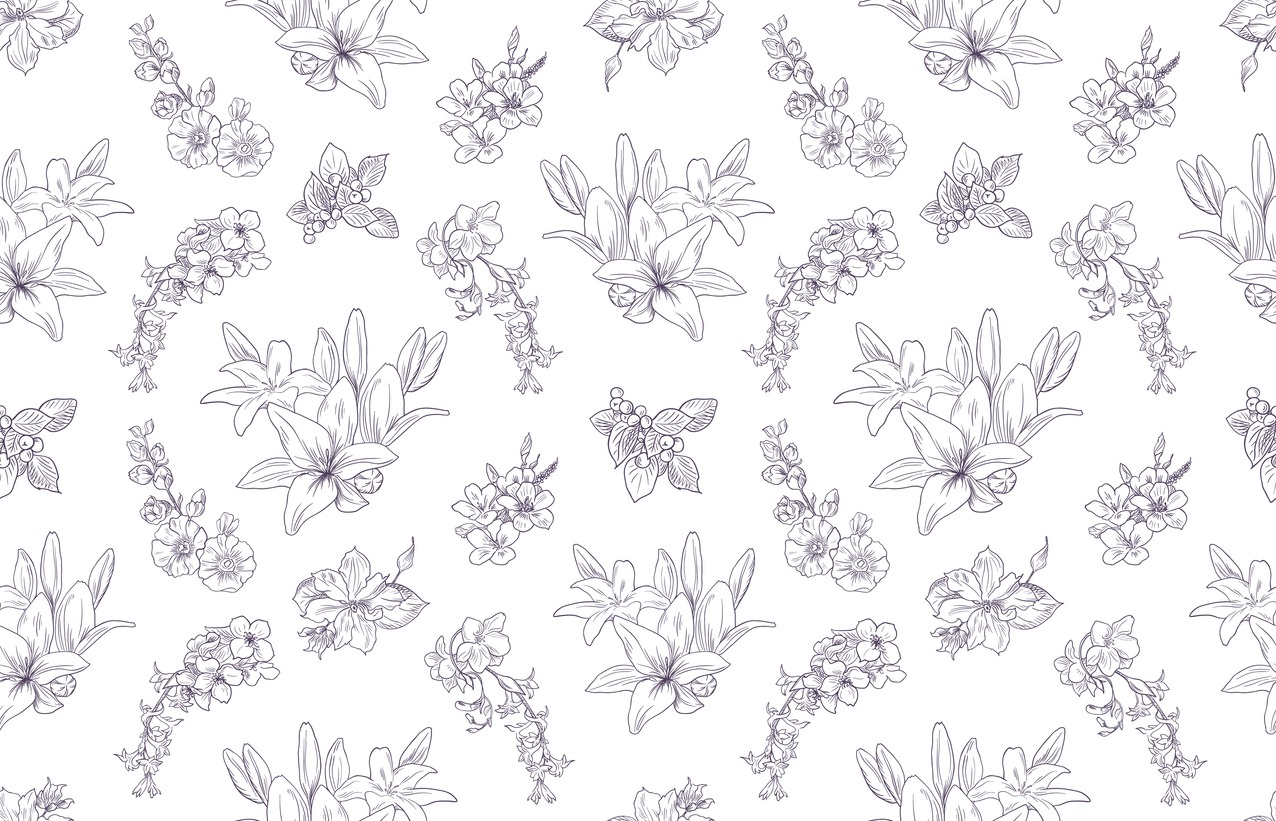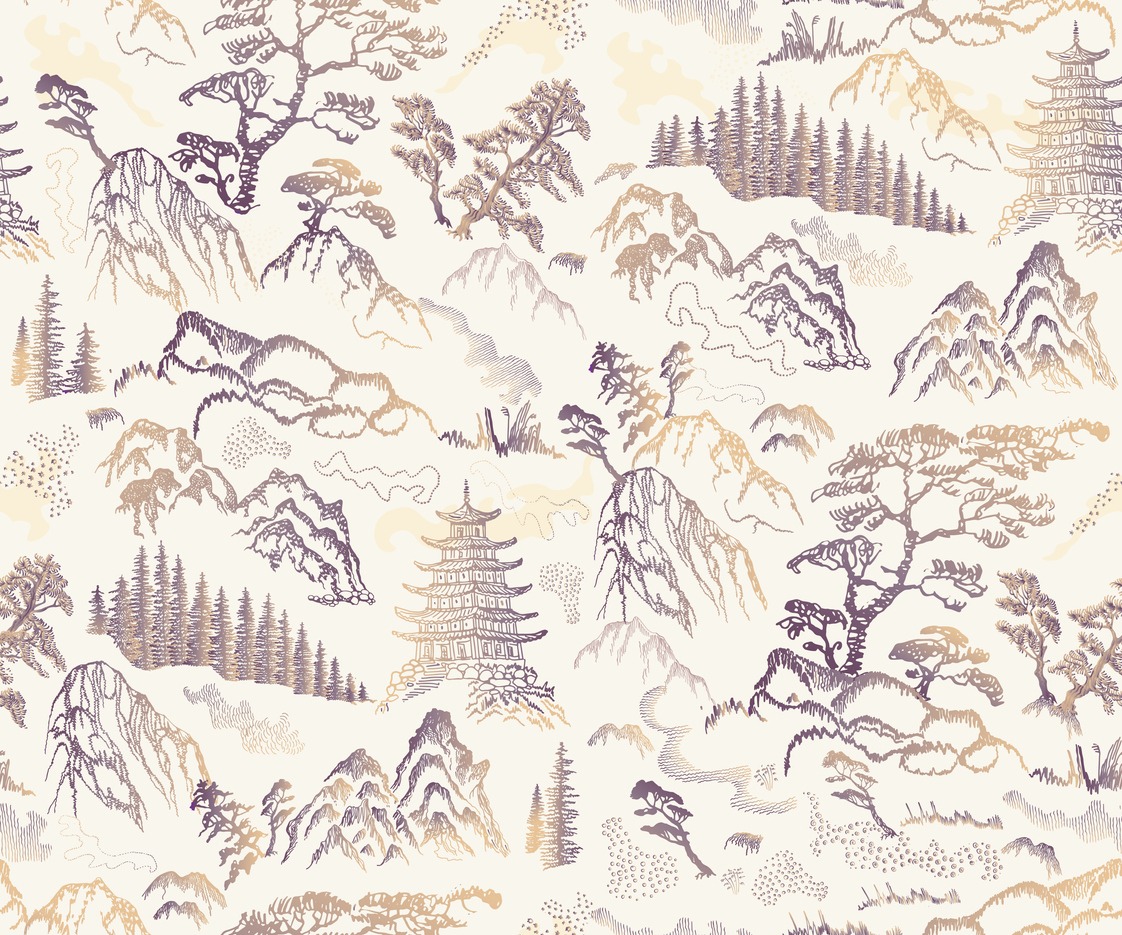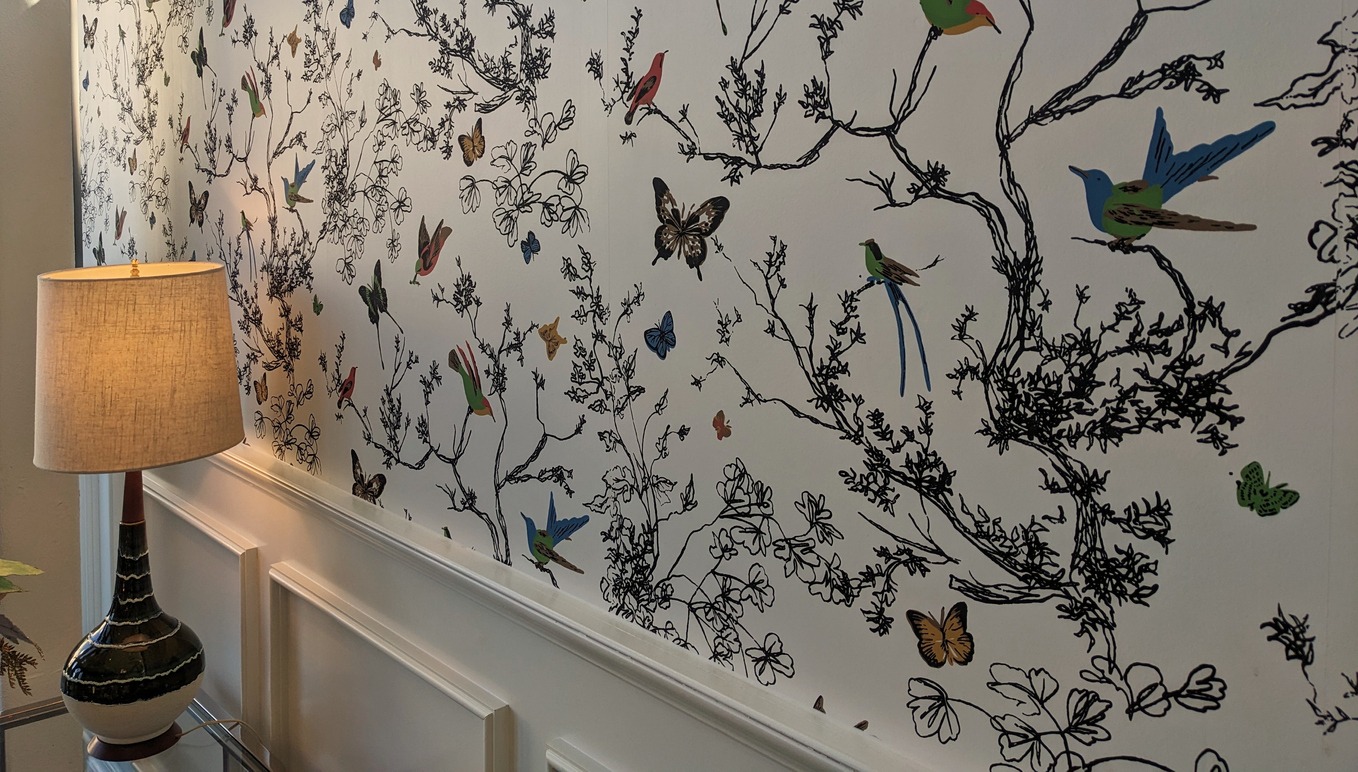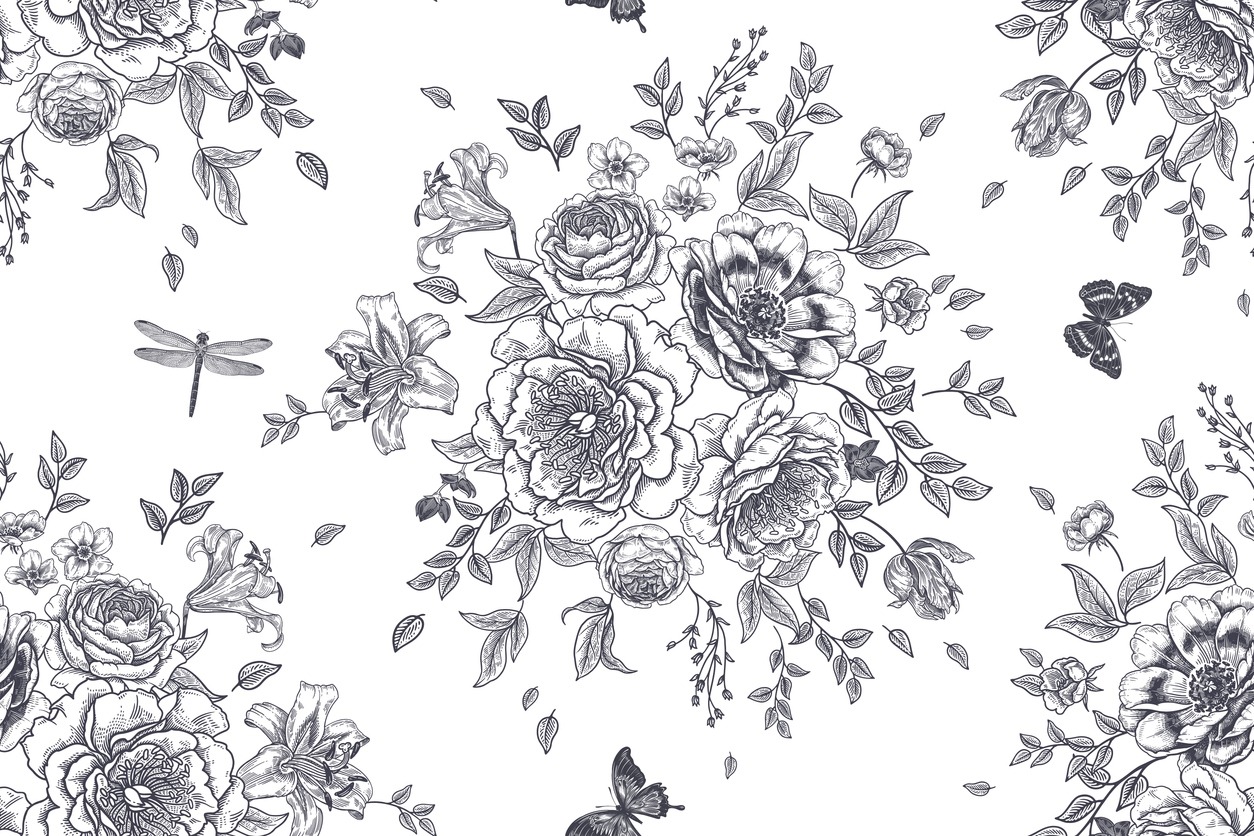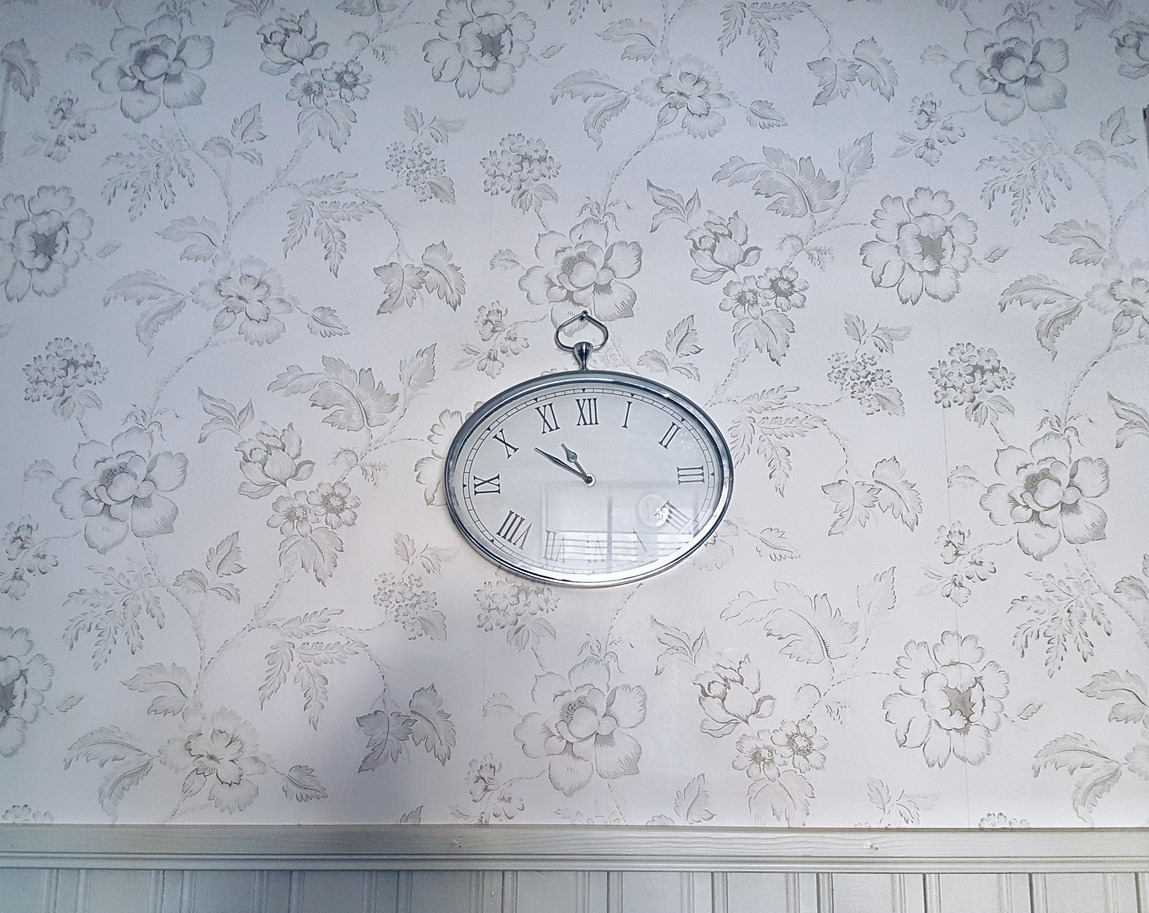Toile, a fabric traditionally known for its intricate pastoral scenes, has found a renewed interest in the world of interior design. Originating from France in the 18th century, toile patterns typically depict landscapes, floral arrangements, and occasionally, historical or mythological events. This classic design element is now being reimagined to fit modern tastes, blending seamlessly with contemporary décor to add a touch of elegance and sophistication to interior spaces.
Incorporating toile wall décor into your home can be a subtle yet impactful way to enhance the aesthetic appeal of your rooms. Whether it’s through wallpaper, framed pieces, or fabric hangings, toile can introduce a sense of depth and narrative to your walls. This article aims to explore the various ways toile can elevate the elegance of interior spaces, offering practical tips and inspiration for those looking to incorporate this timeless pattern into their décor.
The Essence of Toile
Toile, short for “Toile de Jouy,” is a type of printed fabric that originated in Jouy-en-Josas, France, in the 18th century. The term itself means “cloth from Jouy,” and it has come to be known for its distinctive style of detailed patterns depicting complex scenes, often pastoral or idyllic landscapes, on a light background.
These designs frequently feature people engaging in everyday activities, animals, floral patterns, and, occasionally, narratives from historical or mythological events. The classic toile color scheme typically involves a single color, such as blue, red, or black, set against a white or off-white background, creating a striking contrast that highlights the intricacies of the designs.
Historical Significance
Toile’s journey from a French innovation to an international decor staple is a testament to its enduring appeal. Initially produced in the 18th century, toile became popular across Europe and later in America, symbolizing luxury and sophisticated taste. Its designs often reflected the social and political climate of the times, offering insights into the cultural narratives of the period. The fabric was used for a variety of purposes, from clothing to upholstery and draperies, showcasing its versatility and widespread appeal.
Evolution of Toile Patterns
While traditional toile patterns focused on pastoral themes, the modern reinterpretation of toile has expanded to include a variety of other motifs. Contemporary designers have infused new life into toile by incorporating urban landscapes, abstract designs, and even whimsical elements, making it more relatable to today’s audience. This evolution allows toile to transcend its rural origins and become a versatile element in interior design, capable of complementing both traditional and modern aesthetics.
Significance of Color and Contrast
The color and contrast in toile patterns play a crucial role in their visual impact. The traditional single-color design against a light background not only emphasizes the detailed artwork but also allows for easy integration into various color schemes. Modern toile, however, has started to explore a broader palette, including multi-colored designs that offer more versatility for contemporary interiors. The choice of color in toile can dictate the mood and style of a room, from serene and subtle to bold and dramatic.
The essence of toile lies in its ability to tell a story through fabric, making it more than just a decorative element. Its rich history, evolving patterns, and striking color contrasts offer endless possibilities for enhancing the elegance and depth of interior spaces.
In addition to learning about the Toile Wall Décor, learn about the Popular Interior Design Styles of 1990’s. Visit Popular Interior Design Styles of the 90s.
Toile in Interior Design
Toile has made a remarkable transition from being a simple fabric to becoming a significant element in the realm of interior design. Its intricate patterns and scenes are not just decorative but are imbued with a sense of history and storytelling, bringing depth and character to any space. When used thoughtfully, toile can introduce a layer of elegance and sophistication in their interiors, making it a favored choice for those looking to blend classic aesthetics with modern sensibilities.
Visual Impact of Toile
- Depth and Dimension: Toile patterns, with their detailed landscapes and narrative scenes, add a unique depth and dimension to walls and furnishings. This can make rooms feel more expansive and engaging.
- Focal Point Creation: A toile wallpaper or a large fabric panel can serve as a stunning focal point in a room, drawing the eye and anchoring the space with its intricate designs.
- Softening Modern Spaces: In contemporary settings, toile can add a soft, nuanced touch, balancing out the often stark and minimalist elements with its rich, historical narrative.
Balancing Tradition and Modernity
Toile’s versatility allows it to bridge the gap between traditional elegance and contemporary chic. It can be seamlessly integrated into various design styles, from classic French country to modern minimalist, depending on how it’s used.
- Traditional Interiors: In classic settings, toile can be used extensively on walls, upholstery, and draperies to reinforce the historical elegance of the space.
- Modern Interiors: For a modern twist, toile can be used in moderation as an accent through elements like cushions, wall art, or an accent wall, adding a touch of tradition without overwhelming the contemporary aesthetic.
Incorporating Toile in Different Design Styles
- French Country: Toile is almost synonymous with French country style, where it can be used in its most traditional form to enhance the rustic and romantic feel of the interiors.
- Eclectic: In eclectic interiors, toile can be a unifying element, bringing together various patterns and textures with its classic appeal.
- Scandinavian: Even in the minimalistic Scandinavian style, a touch of toile can add warmth and narrative without compromising the clean lines and simplicity.
Whether you’re looking to revamp a single room or redesign your entire home, incorporating toile can elevate the elegance of your interior spaces, making them not only visually appealing but also rich in history and character. Discover more New York’s creative space. Visit Painting the Town – The Vibrant World of New York Graffiti and Street Culture
Practical Tips for Incorporating Toile Wall Décor
Integrating toile wall décor into your interior spaces can transform the look and feel of your rooms, adding a layer of elegance and historical charm. However, to ensure that toile enhances your space without overwhelming it, consider the following practical tips:
Choosing the Right Toile Pattern
Pay attention to the scale of the toile pattern in relation to your room size. Larger patterns work well in spacious rooms, while smaller patterns are better suited for more intimate spaces. Select a toile theme that complements the overall aesthetic and mood of your room. For instance, pastoral scenes might suit a country-style home, while a more abstract or modern toile could fit well in a contemporary space.
Color Coordination
Choose a toile that matches or complements the existing color palette of your room. Toile doesn’t have to be in the traditional blue or red; modern toiles come in a variety of colors to match any interior. If your room has a neutral color scheme, a toile in a bold color can add a vibrant contrast. Conversely, for a room with rich colors, a toile in muted tones can provide a calming balance.
Application Techniques
Decide whether you prefer toile wallpaper or fabric. Wallpaper is more permanent and can cover large areas, while fabric hangings can be changed more easily and used to create framed art or panels. Consider using toile on just one accent wall to prevent the pattern from dominating the room. This approach can create a focal point without overwhelming the space.
Complementary Décor
Balance the toile with solid colors in furniture and accessories to avoid a cluttered look. Use colors from the toile pattern to achieve a cohesive design. If you wish to mix patterns, do so carefully. Pair toile with simple geometric patterns or stripes to maintain harmony in the design.
Toile in Small Doses
If you’re hesitant about committing to large toile pieces, start with small touches like cushions, lampshades, or a single framed piece of toile fabric. Consider DIY projects like covering a headboard, creating a toile table runner, or upholstering a chair seat for a personalized touch.
Incorporating toile wall décor requires a balance between the pattern’s inherent busyness and the existing design elements of your space. By choosing the right pattern, coordinating colors, applying toile thoughtfully, and balancing it with the rest of your decor, you can achieve an elegant and sophisticated interior that pays homage to the rich history of toile while fitting seamlessly into your modern lifestyle.
The Versatility of Toile
Toile’s charm lies not just in its aesthetic appeal but also in its remarkable adaptability across various interior design styles and settings. This versatility makes toile a favored choice for designers and homeowners alike who are looking to add depth, narrative, and a touch of elegance to their spaces. Below are key aspects that highlight the versatility of toile in interior design:
Adaptable to Various Rooms
- Living Rooms: Toile can create a sophisticated backdrop or an inviting atmosphere when used in living areas, whether through wallpaper, draperies, or upholstery.
- Bedrooms: In bedrooms, toile can add a serene and calming effect, especially with softer colors and pastoral themes, making it ideal for bedding, wall art, or an accent wall.
- Dining Rooms: Toile can introduce a formal or whimsical touch to dining areas, depending on the theme chosen. It can be used on chair upholstery, as table linens, or even in china patterns.
- Bathrooms and Powder Rooms: Small spaces like bathrooms or powder rooms can benefit from toile’s intricate patterns, adding visual interest without the need for additional decor.
Suits Various Design Styles
- Traditional: In traditional settings, toile adds a layer of historical elegance and is often used extensively across various elements of the room.
- Modern: For a modern twist, toile can be used sparingly to add a focal point or a touch of contrast, blending seamlessly with minimalist or contemporary designs.
- Eclectic: Toile’s varied themes make it perfect for eclectic interiors, where it can serve as a unifying element among diverse decor pieces.
Toile in Small Doses
Recognizing that some may find toile’s detailed patterns somewhat overwhelming, it can also be used in smaller doses to add just a hint of character and elegance:
- Accent Pieces: Items like throw pillows, lampshades, or small upholstered pieces can introduce toile into a space without it becoming the dominant theme.
- Artwork: Framed toile fabric or prints can serve as unique and eye-catching wall art, offering a nod to the pattern’s intricate beauty without overtaking the room.
Modern Interpretations
Toile has evolved from its traditional roots to embrace contemporary themes and colors, further expanding its versatility:
- Urban and Abstract Themes: Beyond pastoral scenes, modern toile includes urban landscapes, abstract designs, and even whimsical elements, making it relevant in today’s diverse interior styles.
- Color Innovations: Moving beyond the classic blue, black, or red on white, toile now comes in a variety of colors, including softer pastels and vibrant hues, allowing for greater flexibility in design schemes.
The versatility of toile in interior design underscores its enduring appeal and the creative possibilities it offers. From traditional to modern, from extensive use to subtle accents, toile can adapt to enhance any space, making it a timeless choice for those looking to infuse their homes with a blend of elegance, history, and personal style.
Overcoming Challenges with Toile
While toile brings a unique charm and historical depth to interiors, incorporating it into modern design schemes can sometimes present challenges. Its intricate patterns and often busy scenes can be perceived as overwhelming or too traditional for contemporary tastes. However, with thoughtful consideration and creative approaches, these challenges can be effectively navigated, allowing toile to enrich a wide range of interior spaces.
Balancing Busy Patterns
Consider using toile selectively, such as on an accent wall, within framed panels, or on key pieces of furniture, to prevent the pattern from overwhelming the room. Balance the busyness of toile with solid colors in your room’s palette. Choose complementary colors that appear in the toile design to create harmony and coherence.
Modernizing Toile
Opt for toile designs with modern or abstract themes to maintain a contemporary feel while still enjoying the classic elegance of toile. Break away from traditional toile colors by selecting patterns in unexpected hues that fit modern color schemes, such as teal, orange, or even metallics.
Integrating with Minimalist Décor
In minimalist settings, toile can serve as a focal point or a single decorative element that adds interest without clutter, such as a single piece of upholstered furniture or a bespoke wall hanging. Choose toile patterns that adhere to a minimalist color palette, such as black and white or shades of gray, to blend seamlessly with the surrounding decor.
Addressing Perceptions of Old-Fashioned Style
Combine toile with modern elements and textures, like metal finishes or contemporary art, to create an eclectic mix that feels both fresh and timeless. Use toile in unconventional ways, such as in contemporary art pieces, as a backdrop for modern shelving or in combination with cutting-edge materials to showcase its versatility.
Maintaining Toile Décor
Choose high-quality toile fabrics and wallpapers that are durable and fade-resistant to maintain their beauty over time. Follow proper care instructions for toile materials, whether it’s regular dusting for wallpaper or professional cleaning for upholstered items, to keep them looking their best.
By addressing these challenges with innovative solutions and a creative mindset, toile can be transformed from a traditional fabric into a versatile design element that enhances contemporary spaces with its unique blend of artistry and elegance.
Conclusion
Toile wall décor possesses a timeless charm that can significantly elevate the elegance of interior spaces. Despite its traditional roots, toile’s versatility allows it to blend beautifully with both classic and contemporary design schemes. By thoughtfully choosing patterns, balancing busy designs, and incorporating toile in both bold and subtle ways, it’s possible to overcome any challenges associated with its use. Whether you’re looking to add a touch of historical depth, create a focal point, or simply infuse a room with a sense of sophistication, toile offers endless possibilities for enhancing your home’s aesthetics.

